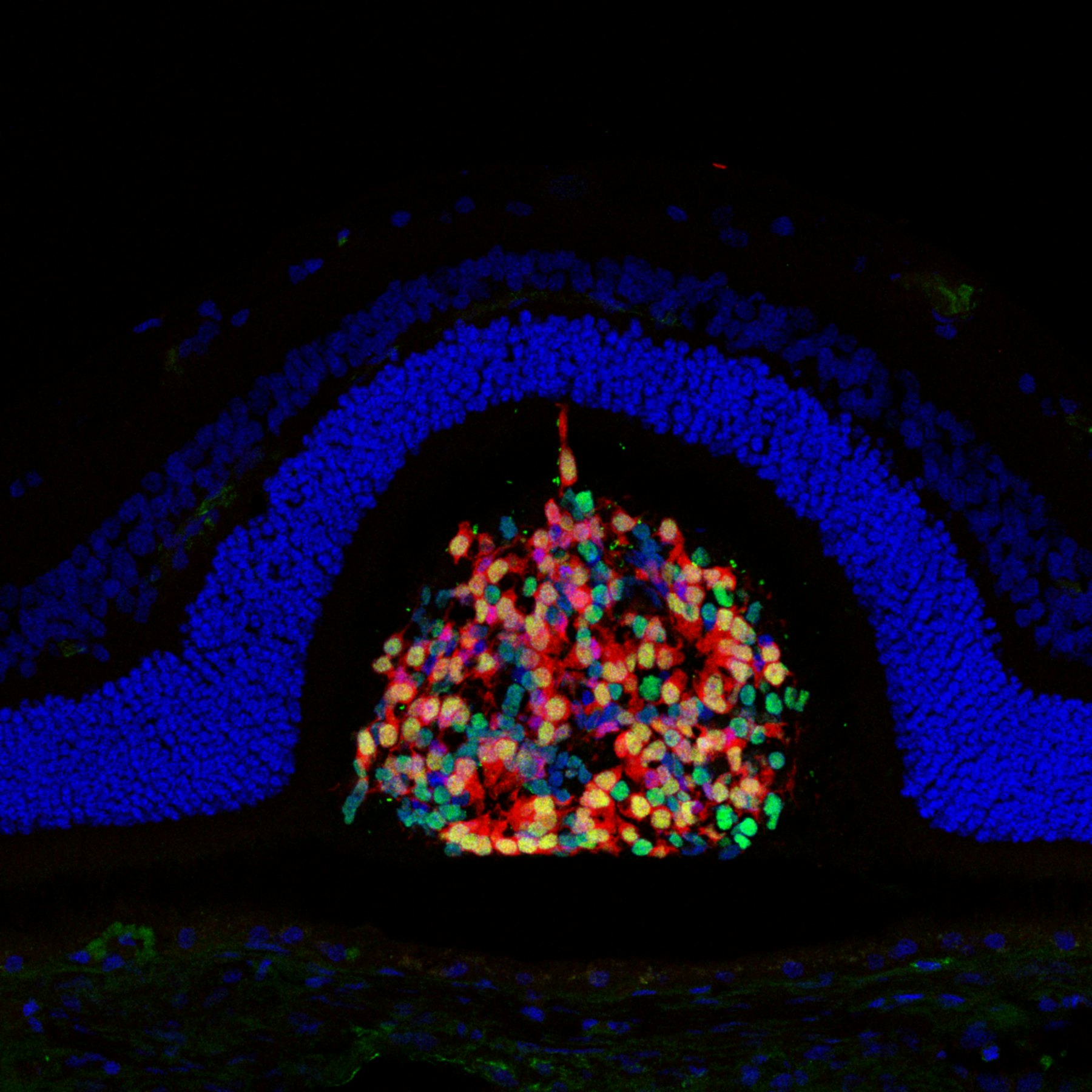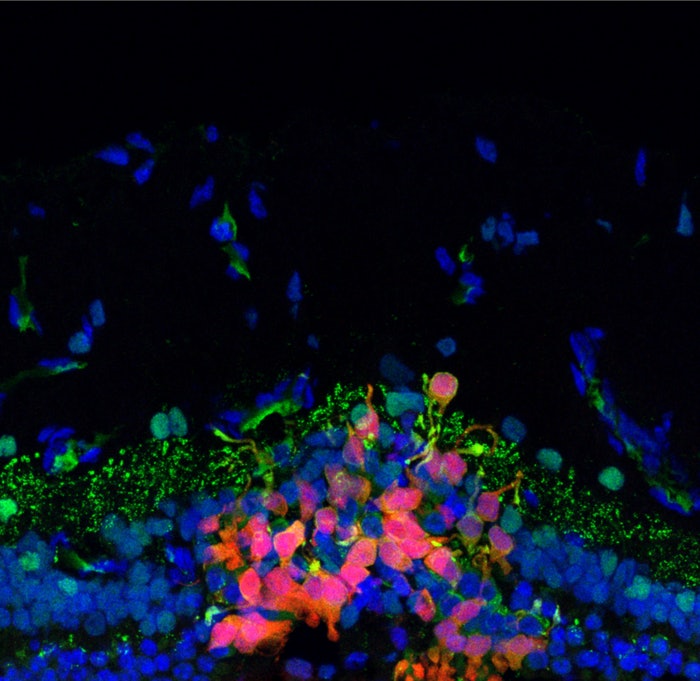
A promising method to treat blindness is to implant healthy light-sensitive cells into failing eyes. But these cell therapies — which have been in development for at least three decades — often fail because the implanted cells die rapidly or fail to incorporate themselves into the eyes. But new stem-cell research could potentially eliminate these roadblocks.
What’s new — Experiments with human stem cells and dogs reveal that a cocktail of drugs that suppress the immune system could help implanted cells survive for months. In fact, the implanted cells even began integrating with the eyes, according to a new study published in the journal Stem Cell Reports.
The scientists injected immunosuppressed dogs with advanced stages of inherited retinal degeneration with the precursors to photoreceptor cells coaxed from human stem cells. They found that the immature cells developed into full-grown photoreceptors — and that they started to form connections with the dogs’ neurons. The research offers a critical first step toward using stem-cell therapies to treat eye conditions, including inherited forms of blindness.
HERE'S THE BACKGROUND — Genetic cases of blindness often result from problems with the light-sensitive rod and cone cells in the retina, the tissue that lines the inner eyeball. Scientists have had great success in treating some genetic eye conditions using gene therapies, which involve injecting working versions of malfunctioning genes into the eye’s photoreceptor cells. But the genes responsible for many genetic cases of blindness remain unknown.
In turn, several forms of genetic blindness have no gene therapy or indeed any therapeutic options. And for some people it is already too late — their condition has progressed so far that no photoreceptor cells remain intact, so gene therapy wouldn’t have an effect anyway. Instead, regenerative therapies to replace ailing photoreceptors with functional cells could offer another avenue to reversing blindness.

How they did it — In the new study, researchers dosed human stem cells with chemicals that coaxed them into forming the precursors of photoreceptor cells. To help track these cells’ positions over time, the stem cells were genetically modified to generate fluorescent proteins.
The scientists then injected them into the retinas of seven dogs with normal vision and three with advanced stages of inherited retinal degeneration. In the animals, these immature cells matured into photoreceptors.
When the stem cells were injected into the dogs with normal vision, their retinas were still intact, and therefore served as physical barriers that prevented the implanted cells from connecting with neurons in the eyes. But in the dogs with retinal degeneration (for which the treatment is targeted) the injected cells did a much better job migrating into the retina.
Since the canines’ immune systems would likely recognize the transplanted human cells as foreign entities and attack them, the researchers gave some immunosuppressive drugs.
As expected, injected cell numbers declined substantially in the canines who did not receive the drug cocktail, whereas cell numbers dipped but then kept steady in dogs who did receive the drugs. The cells in the immunosuppressed dogs survived up to five months post-injection. The researchers also detected signs of implanted cells connecting with neurons in the pups’ eyes.

Why it matters — Discovering that human photoreceptor precursor cells could survive and mature into photoreceptor cells after being transplanted into an adult canine retina suggests regenerating a specific layer of the retina — the one that contains rod and cone photoreceptors — is possible in an adult eye.
“This provides hope for being able to treat patients even in adulthood,” Beltran says.
Importantly, the dogs used in this study also provide a better picture of how the same therapy might work in humans. Senior study author William Beltran, a veterinary ophthalmologist and vision scientist at the University of Pennsylvania, tells Inverse that dogs are good models for humans in this case for several reasons, ostensibly making translating the research into human bodies later a simpler task.
For one, large animal models with human-size eyes allow scientists to develop the same surgical approaches that may be used in people.
Dogs also receive therapy doses akin to those that would most likely be used in people, and they may experience some of the same immune reactions as we do.
WHAT'S NEXT — In the future, the researchers will continue to refine their technique and eventually test whether the dogs experience improved vision due to the implanted cells.
It’s still unclear why some implanted cells died within a few days following transplantation — even when dogs were given immunosuppressive drugs. The team is investigating this process in hopes that they can try to improve graft survival, Beltran says.
All in all, future cell therapies for retinal degeneration may require immunosuppressive drugs if the donor cells aren’t genetically identical to the recipient. The best approach to prevent adverse immune reactions without using immunosuppressive drugs would be to inject stem-cell-derived photoreceptors from the patient after they’ve been corrected for genetic defects, Beltran says.
Treatments for blindness may soon join the rapidly expanding — and extremely expensive — category of personalized medicine.







